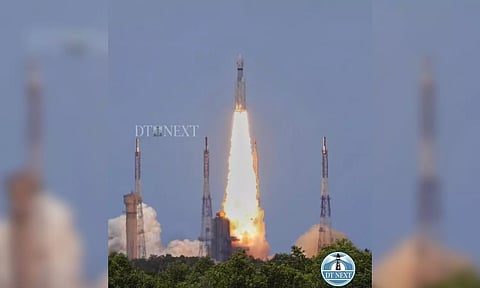

CHENNAI: As Chandrayaan-3, India's ambitious lunar mission, is inching closer to making a soft landing on the Moon, it is crucial to understand where its predecessor, Chandrayaan-2, went wrong.
Chandrayaan-2 was launched around the same time of the year in 2019 from the Satish Dhawan Space Centre in Sriharkota. The launch was initially planned for July 14 but it was rescheduled to July 22 due to a technical glitch. The landing was planned on September 7. The objective of the mission was to study lunar surface composition's variations and detect the location of the water ice in Moon's south pole. The mission was planned at the cost of Rs 978 crores.
Infographic: Varghese Kallada, Text - Mohandoss TK
The mission consisted of three modules: an orbiter, a lander (Vikram) and a rover (Pragyaan). The combined mass (wet) of the mission was 3,850 kilograms and the dry mass was 1,308 kilograms. While Vikram and Pragyan weighed over 1,400 kilograms combined.
In case of a successful landing, the lander would have deployed the rover on the lunar surface where it would have performed scientific activities for 1 lunar day i.e 14 earth days. The intended mission period was 7.5 years.
What went wrong?
According to reports, the lander's velocity increased while getting closer to the lunar surface when it actually had to hover at a decreased velocity. Things worsened when the lander deviated from its trajectory at around a mile's altitude from the surface.
Former ISRO chairman K Sivan had then noted that the lander would have had a "hard landing". NASA and ISRO jointly attempted to communicate with the lander, but in vain as the southern region of the Moon was nearing dusk. Finally, the breakthrough in finding the lander was achieved in December 2019, as NASA released an image its Lunar Reconnaissance Orbiter (LRO) captured of the debris after inputs from a Chennai volunteer.
Chandrayaan-3 has targetted to make a landing close to where the second one attempted. The mission could make India the fourth country to make a soft landing after US, China, and the erstwhile Soviet Union, and the first country to make its presence on the Moon's south polar region, justifying the fervent prayers that are being made across the nation for the mission's success.